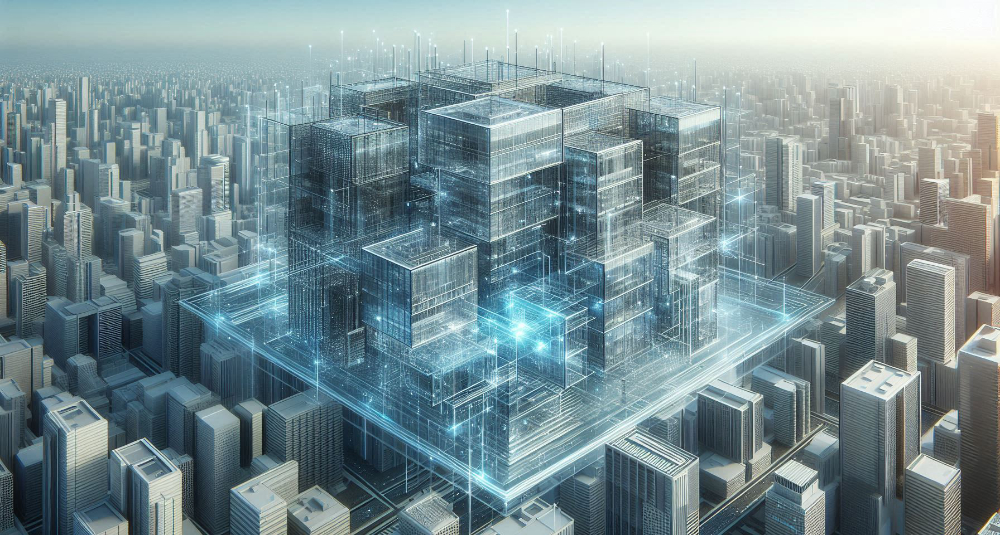Digital representation
The phrase digital representation is used in the standard 'BS ISO/IEC 30173, Digital twin — Concepts and terminology' to explain what a digital twin is, published in 2023 it describes Digital Twin as: "digital representation of a target entity with data connections that enable convergence between the physical and digital states at an appropriate rate of synchronisation.'
The digital representation being the digital version of the target entity, which is the subject of the digital twin. The standard describes these as being ‘real’ things like components, assets, systems and processes. The subject is then observed through data connections like sensors. Depending on the subject, the way it is represented may change. It may be useful to represent the shape of a component graphically (i.e. a 3D model), but a process or system may need to be represented more conceptually (e.g. as a diagram or a model notation). Much like with Building Information Modelling (BIM), digital twins aren’t about 3D models, they are about the exchange of pertinent information. Convergence is the act of coming together. In this instance, convergence can be achieved in three different ways:
- The digital representation changes to reflect the target entity (e.g. a component, which is being tracked, is moved. Once in its new position, its location is updated with new coordinates).
- The target entity changes to reflect the digital representation (e.g. someone sets a thermostat which is monitoring a living room. The thermostat triggers the room to warm up).
- Both the digital representation and target entity change to meet in the middle (e.g. a complex algorithm behind a series of interconnected digital twins may influence several entities and representations concurrently).
Finally the appropriate rate of synchronisation is the idea that convergence occurs as often as needed. For cases relating to life safety, near real-time may be a requirement. For other use cases, this convergence might happen less frequently.
[edit] Related articles on Designing Buildings
- Artificial intelligence and civil engineering.
- Big data.
- BIM.
- Blockchain.
- Connected digital twins.
- Defining the digital twin: seven essential steps.
- Digital Roads 2025.
- Digital Twins, A BSRIA Topic Guide TG25 2024.
- Engineering Smart Cities.
- Internet of things.
- Interoperability.
- Making the most of big data.
- Open data.
- Smart technology.
- Twin cities.
- What a digital twin could be.
- UsBIM.geotwin
[edit] External links
'Has ISO answered the question "What is a digital twin”? AT Journal issue 150, summer 2024 by Dan Rossiter FCIAT, Built Environment Sector Lead, BSI.
Featured articles and news
Homes England creates largest housing-led site in the North
Successful, 34 hectare land acquisition with the residential allocation now completed.
Scottish apprenticeship training proposals
General support although better accountability and transparency is sought.
The history of building regulations
A story of belated action in response to crisis.
Moisture, fire safety and emerging trends in living walls
How wet is your wall?
Current policy explained and newly published consultation by the UK and Welsh Governments.
British architecture 1919–39. Book review.
Conservation of listed prefabs in Moseley.
Energy industry calls for urgent reform.
Heritage staff wellbeing at work survey.
A five minute introduction.
50th Golden anniversary ECA Edmundson apprentice award
Showcasing the very best electrotechnical and engineering services for half a century.
Welsh government consults on HRBs and reg changes
Seeking feedback on a new regulatory regime and a broad range of issues.
CIOB Client Guide (2nd edition) March 2025
Free download covering statutory dutyholder roles under the Building Safety Act and much more.
Minister quizzed, as responsibility transfers to MHCLG and BSR publishes new building control guidance.
UK environmental regulations reform 2025
Amid wider new approaches to ensure regulators and regulation support growth.
BSRIA Statutory Compliance Inspection Checklist
BG80/2025 now significantly updated to include requirements related to important changes in legislation.























